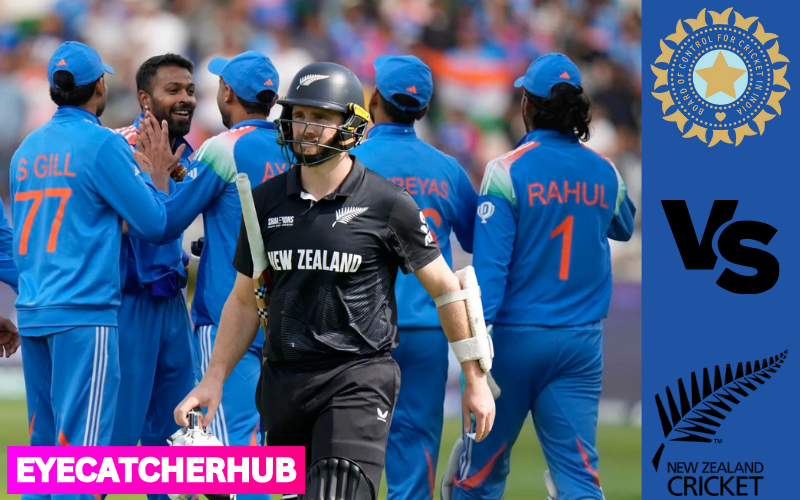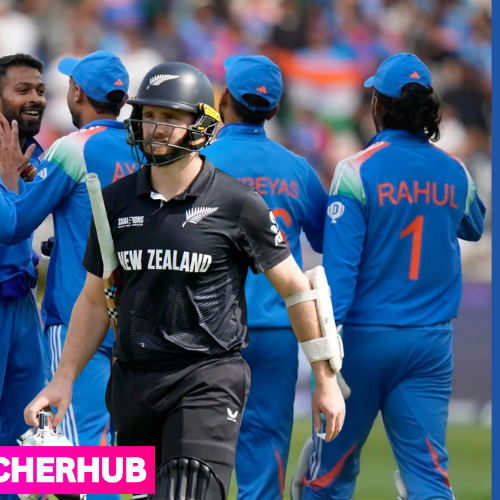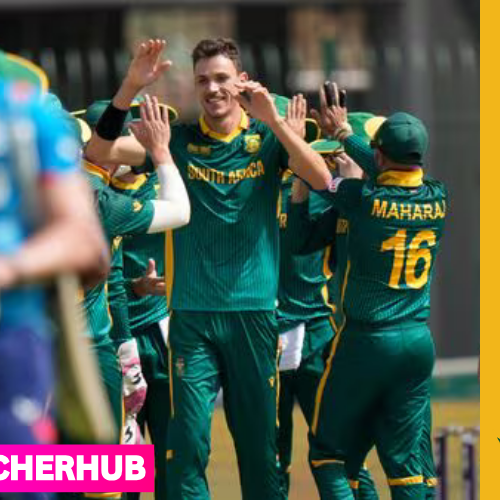Contests of cricket are past the stage of mere numbers and statistics. They become stories interlaced with human emotions, individual contests, and the overall fabric of team spirit, especially in the case of high-stakes tournaments like the ICC Champions Trophy. The India vs. New Zealand clash was a tapestry of such stories, each thread contributing to the overall outcome.
Player Storylines: The Road to This Season and Culminating Moments
Shreyas Iyer Redemption Arc:
Shreyas Iyer’s knock was more than a score, it was the mark of his resilience. He had been under the critical spotlight recently, and this performance was a resounding declaration of his prowess.
His part in anchoring the innings and building partnerships showed his maturity as well as why he matters for the Indian middle order.
His innings was the centerpiece of the Indian batting effort.
Varun Chakravarthy’s Rise:
His five-wicket haul was a career-defining moment for Varun Chakravarthy It was the fruit of his hard work and hard work.
Bowlers have to bowl to the strengths of the New Zealand batsmen and his unique bowling style with such variations and mystery made it a potent weapon against them.
His story is about perseverance, and adversity.
Kane Williamson: All Alone
Kane Williamson’s knock was a true show of his ace although it came in a losing battle. He battled hard, attempting to propel his team to glory.
His poise in adverse conditions and technical straits at all of them stood out throughout his innings.
His innings also reaffirmed his stature in the New Zealand team.
The all round contribution of Hardik Pandya:
Hardik Pandya’s powerful batting and bowling play a very important role of the indian team.
He was able to show up in big moments, and that was very valuable.
The Micro-Battles: Crucial Duels Within the Match
Iyer vs New Zealand’s Spin:
The battle between Shreyas Iyer and New Zealand’s spin bowlers was a key contest in the match.
His ability to counter their variations and keep his head was crucial to…
Chakravarthy vs Williamson:
The battle between Varun Chakravarthy and Kane Williamson turned out to be a fascinating contest.
That Chakravarthy was able to deceive Williamson and take him out proved to be the turning point of the match.
Pandya vs New Zealand pace attack:
Along with explosive hitting from Hardik Pandya in the New Zealand pace attack, helped the indian team rack up invaluable late runs.
His ability, under pressure, to score runs was very significant.
The tussle during the middle overs:
Both innings clearly illustrated the importance of contesting the middle overs.
Teams that dominated the middle overs, the part of the game most affected by pace, came out on top.
Field Aspect and Tactics Adjustment Implications
Strategic Field Placements:
Both captains used aggressive field settings to increase their chances of taking wickets and containing runs.
Field placements were highly effective in building pressure and prompting mistakes.
Tactical Change: Use of Over Speed Reliefs in Sprints.
Aspects like the timing of those changes in the bowling attack and adjusting to the ever-changing nature of the conditions were key variables.
Captains were forced to make quick-reflex decisions based on how matches were progressing and how each bowler was behaving.
The use of DRS:
The Decision Review System (DRS), also featured in the encounter with both sides utilising it to challenge the officials.
Atmosphere and Fan Experience
The Dubai Crowd:
Dubai’s enthusiastic crowd contributed to the match atmosphere.
The player was motivated by the support of the fans.
Global Audience:
The ICC Champions Trophy is watched all over the world, with fans from all over the globe tuning in to see the matches.
The tournament is an example of cricketing outreach, with the reaches of cricket today going well beyond traditional power houses, sometimes sparking an interest.
Social Media Impact:
Discussions, and reactions, to the match exploded across social media platforms.
And both teams played a match that drove plenty of online engagement.
What It Means for the Tournament (and Beyond)
Momentum and Confidence:
This win gave them important momentum and confidence before the semi-final.
The victory bolstered their faith in their skills and their chances at winning the tournament.
Lessons for New Zealand:
They did learn useful lessons from this match, though, even if New zealand did have a net loss.
All eyes will be on us – we are where we’re expected to be, but we’ll have to debrief and definitely improve this ahead of the semi-final.
The ongoing narrative:
This match added, another chapter, to the ongoing ICC champions trophy, narrative.
The outcome, will reverberate, through the tournament.
Looking into these deeper layers of the match helps us arrive at a more holistic and nuanced understanding of the India vs. Here is a look at the New Zealand match and its importance in ICC Champions Trophy 2025.
A Long History of Challenge — Such is the Weight of History, the Struggle of the Mind
Cricket matches come with gravitas, especially with contemporary rivals like India and New Zealand. Previous clashes, past triumphs and shared disappointments all come to define the psychological map of the game.
Historical Context:
India and New Zealand have played many memorable matches across formats, owing to their rivalry. Every encounter builds on their mutual cricketing legacy.
These teams have not only competed in high-stakes matches against each other before, at past ICC tournaments, such as this Champions Trophy and the World Cup.
The memory of these previous matchups plays a role in shaping the mindset of both the players and the expectations of fans.
Psychological Warfare:
Not in just physical skills, the psychological aspect is also important in cricket. There is always, at every level, a slight game of psychological warfare between players and captains, trying to get an edge.
The match is also played when it comes to body language, facial expressions or tactical decisions.
Such psychological skirmishes can be magnified by the pressure of a key tournament game.
Ultimately, it was the players’ mental fortitude, in the match’s most crucial moments, that decided the final result.
Strategic Minute by Minute: The Significance of the Captains and Strategy of both Teams
It is a sport of fine margins: small tactical decisions can make a big difference in the final result.
Captaincy Decisions:
There is captaincy too, how we handle bowling changes, field placements and batting order.
They need to be able to read the moves of the other team and switch up their individual strategies accordingly.
AS a game changing decision, knowing when to deploy DRS or not
The sequence of decisions on the field by both captains had a huge impact on the rhythm of the game.
Team Tactics:
Teams have certain strategies they deploy during specific match situations on the field like powerplays, middle overs, death overs.
Implementing these tactics takes coordination, discipline and adaptability.
One of the pivotal tactics considering the use of spin bowling, in middle overs, was the indian team.
A crucial tactical decision was New Zealand’s plan to take early wickets with their pace bowlers.
Assessing the Pitch And Conditions:
Getting a sense of the pitch conditions, and how it may change over the duration of play, is crucial.
For example, both captains as well as coaches study the pitch prior to the match and adjust their plans as per what they see.
The weather in Dubai, also contributed to the player’s activity.







